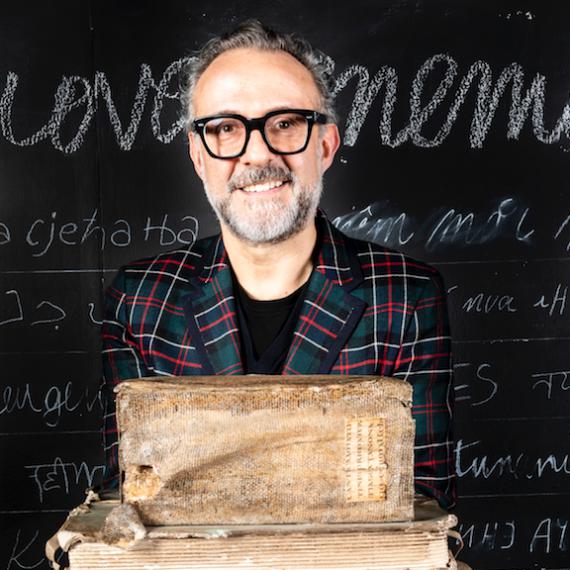Massimo Bottura

Credits Brambilla-Serrani
Today, when we write about Massimo Bottura, we all must keep in mind what writer Alessandra Meldolesi knows and writes well on the pages of “6 (sei)”, a vital book for those who are interested in deepening the Nuova cucina italiana movement, born on the first decade of this millennium. That is: «At the beginning, in 1987, it was the trattoria in Campazzo. Here Bottura conceived himself as a owner. But gradually he lost hold of it and found himself trapped into the art of Lidia Cristoni. She was his first teacher, soon followed by Georges Cogny , the classic cuisine priest from Nonantola and Alain Ducasse, who took him with himself to Louis XV in Monaco. Here the chef learned how to cook clean, concentrated and organized, three principles we would never forget».
This was followed by the meeting with Ferran Adrià, three years after Massimo set his foot and mind on Osteria Francescana. It was in 1999, a year that ended a century, a millennium. In 2011 Botturareceived three Michelinstars, then came the fourth, third, then second and finally first place in the World 50Best in 2016 and in 2018 (he came second in 2017 and before that he got the Chef's choiceaward for the favourite chef among his international colleagues) and 20/20 from Guida dell’Espresso. There’s still a very long way to go, to make the world realize that Italian cuisine, intended as pizza, pasta, risotto and smiles, is made of intelligent chefs who know how to use the endless excellent products by escaping mostly folkloristic stereotypes.
Chefs like Bottura are scary because they break with the past without neglecting a very Italian character. Before speaking about tradition (by the way, is tradition a static monolith or is it the sum of a thousand different non-stop winning ideas?) or talking about molecular cuisine, mistaking a technique with a course, we should make one step behind and head to Modena to taste his Compressed pasta e fagioli or the Bollito non bollito.We’d understand that this is a contemporary sum of centuries of cucina italiana, a movement that has gone traveling around the world and comes back to the Buon Paese to get new vital lifeblood.
Read also
Bottura holds Italy on his shoulders
Bottura on top of the world
Here’s my story of Francescana
Waiter for a day
An x-ray of Osteria Francescana
Has participated in
Identità di Libertà, Identità London, Identità Milano, Identità New York
born in Milan in March 1955, at Il Giornale for 31 years dividing himself between sports and food, since 2004 he's the creator and curator of Identità Golose.
blog www.paolomarchi.it
instagram instagram.com/oloapmarchi